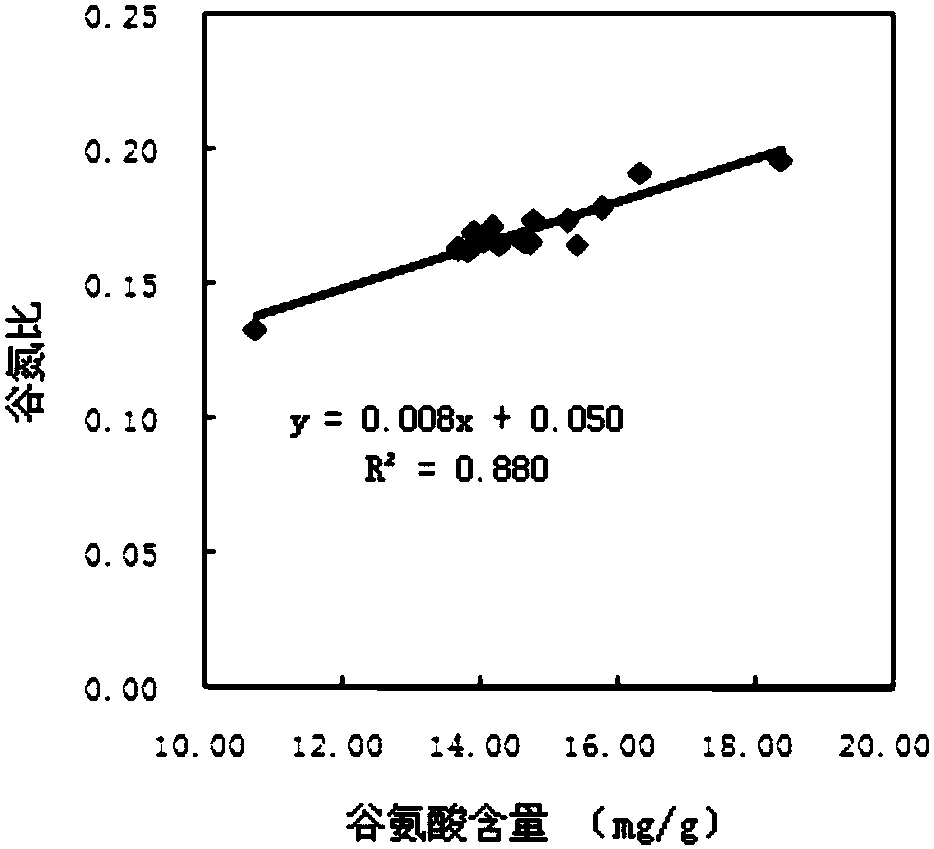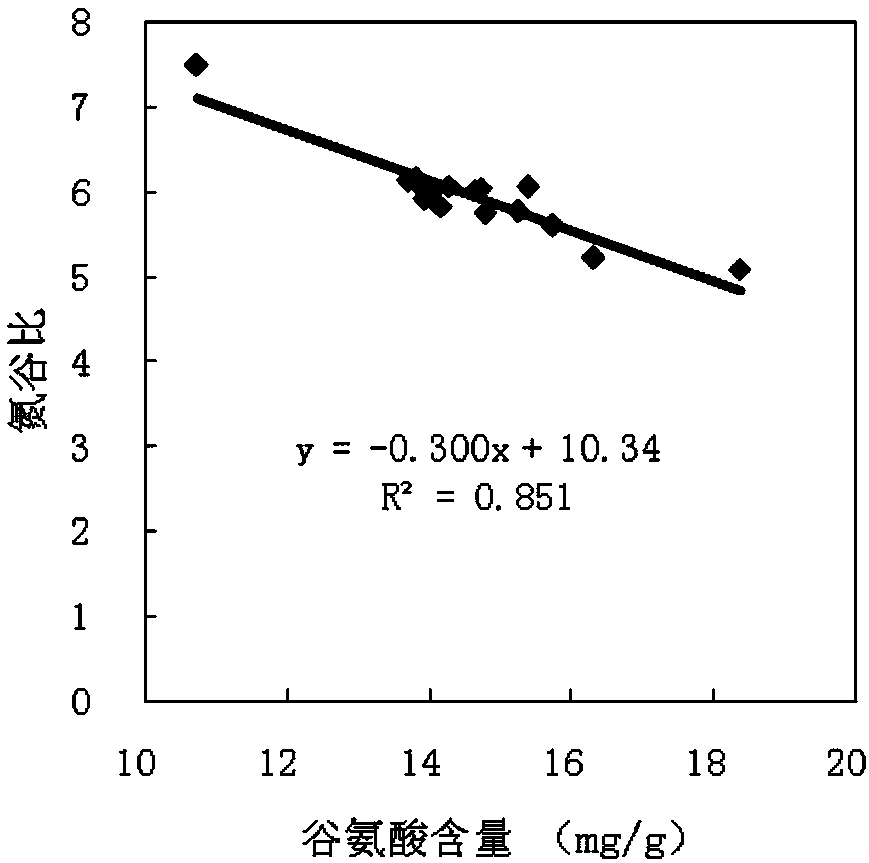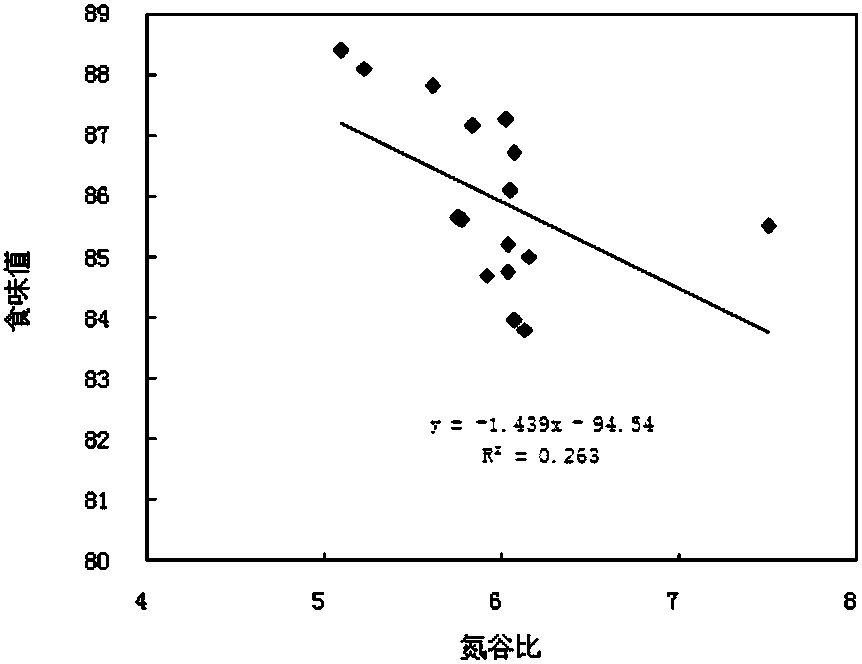Method for screening japonica rice with high taste value and high protein content by ratio of brown rice protein content to glutamic acid content
A technology of protein content and taste value, applied in rice cultivation and other fields, can solve problems such as inconsistent research results, and achieve the effect of increasing economic burden
- Summary
- Abstract
- Description
- Claims
- Application Information
AI Technical Summary
Problems solved by technology
Method used
Image
Examples
Embodiment 1
[0018] According to the product comparison, regional test and the test results of the taste meter AN-700 produced in Japan, the inventor selected Shendao 2 from the combination of "Liao 947 / Sasajin", and from the combination of "Shennong 8834 / Nonglin 315" Shendao 7 was also bred. Therefore, 16 different types of varieties were selected to carry out product comparison tests. The experimental data are shown in Tables 1, 2, and 3; after maturity, threshing and yield calculation were carried out. After the rice was placed in a cool and dry warehouse for 3 months, it was According to the national standard "Rice" (GB 1350-2009, formerly GB / T 1350-1999), "High Quality Rice" (GB / T17891-1999) and the industry standard "Edible Japonica Rice" (NY / T594-2002) of the Ministry of Agriculture, processing into brown rice and polished rice, cook the polished rice, organize tasting (more than 5 people) to score, repeat twice, the score is 83.8-88.4, and then use the taste meter AN-700 to measure...
PUM
 Login to View More
Login to View More Abstract
Description
Claims
Application Information
 Login to View More
Login to View More - R&D
- Intellectual Property
- Life Sciences
- Materials
- Tech Scout
- Unparalleled Data Quality
- Higher Quality Content
- 60% Fewer Hallucinations
Browse by: Latest US Patents, China's latest patents, Technical Efficacy Thesaurus, Application Domain, Technology Topic, Popular Technical Reports.
© 2025 PatSnap. All rights reserved.Legal|Privacy policy|Modern Slavery Act Transparency Statement|Sitemap|About US| Contact US: help@patsnap.com



